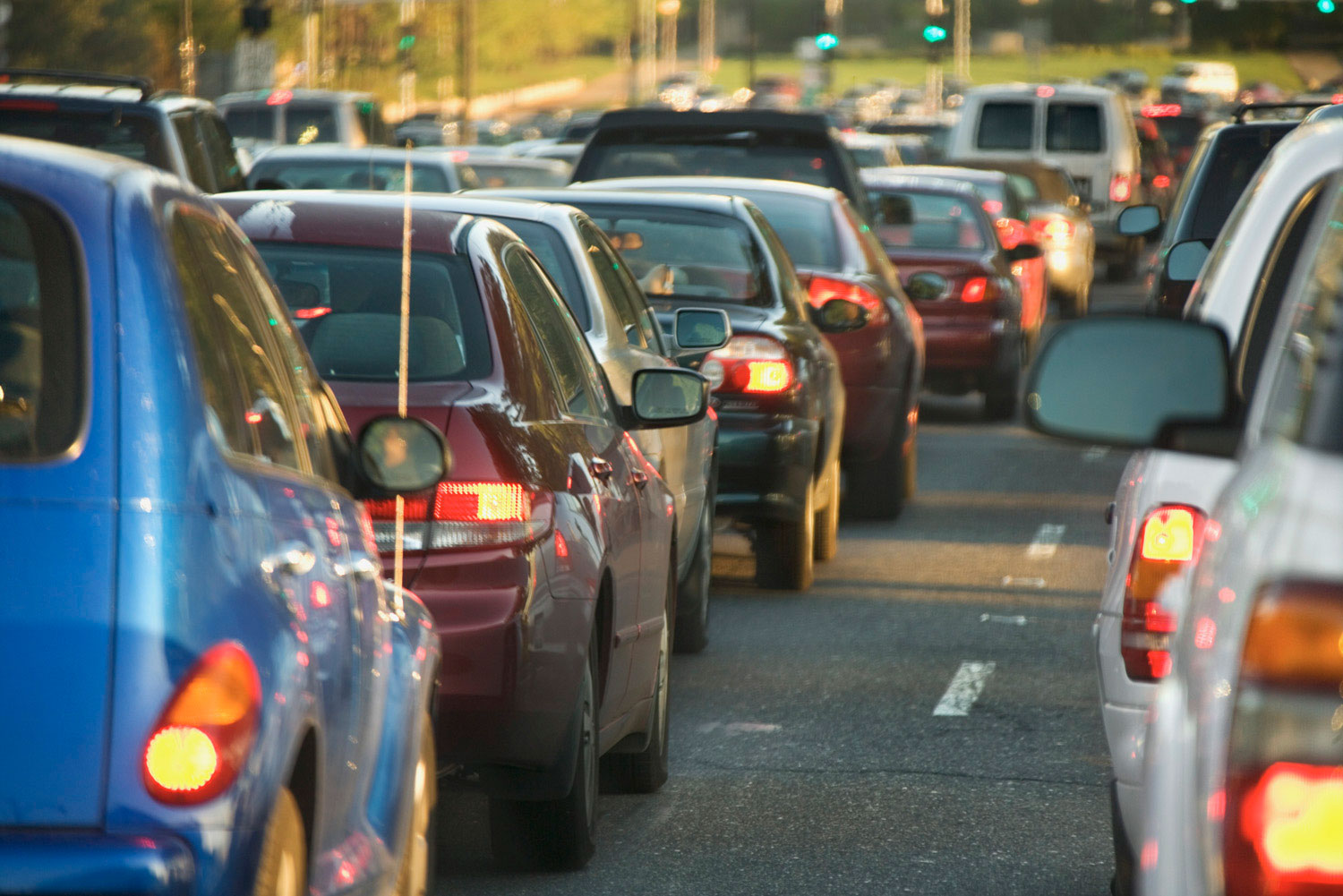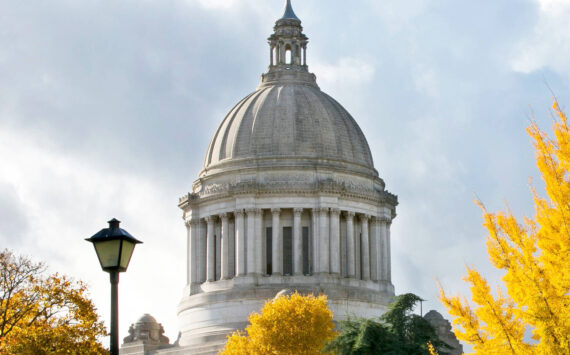Parking drives us all crazy, costs too much and never seems to be there when we need it
By Morf Morford
Tacoma Daily Index
If you look at an aerial view of Tacoma (or any city in America, I’d guess) one of the most striking features is the amount of space dedicated to automobiles – especially parking.
There are multiple layers of irony and contradictions to this problem. If the central principle of value in real estate is location, the central principle of parking is timing.
A parking spot is the ever-shifting nexus between location and time.
A given parking spot swings wildly in value as the day progresses. It might (or might not) actually cost more at any given time slot, but it is certainly in higher demand at some parts of the day. And then, on a predictable schedule, the demand drops, or even evaporates.
The clock defines the value of the parking space.
Could anything be more absurd than a city dedicating such a high percentage of its landscape to something as inherently ephemeral as parking?
The average city has a ratio of between 3-8 parking spaces per automobile. These spaces – and even more so, these automobiles – are scattered throughout the city. The cars keep moving. The parking places are, of course static.
Here are the basic math components of our parking dilemma; there are about 260,000,000 vehicles across the United States – and most cars are parked about 95% of the time.
And, depending how they are defined, the USA has between 725 million and two billion parking places.
The average size of a parking place is nine feet wide and eighteen feet long, enclosed garages are usually ten feet by 20 feet. That’s about 200 square feet per space.
A 200-space parking lot that is estimated to require 325 square feet per stall (this includes egress) will need a paved area of 65,000 square feet, or about 1.5 acres.
Monthly parking cost in some areas (like New York, Newark, and Jersey City) can approach $700. Even places like Austin, Texas can charge over $100 a month for that precious parking place.
Besides the sheer cost of real estate (and loss of tax revenue) cities dedicate a huge percentage of their budgets on parking studies and surveys, enforcement and regulation.
Parking impacts everything from traffic, street maintenance, zoning and real estate values.


Parking is the bane of every urban planner. And every one of us that drives.
Vast empty parking lots are an eyesore, an environmental wasteland and a financial black-hole unused for most of a typical day.
And yet we need them when we need them.
Yes, parking lots (and expressways and viaducts) are essential; but is it essential that they be ugly?
Or even that they dominate, bisect or devastate the urban environment?
Cities, we apparently need to be reminded, are built by people and to facilitate human interactions like shopping, working and using recreational resources.
Our land dedicated to cars should be as subdued as possible – not the major architectural feature of our city centers.
Consider the parking lot of any mall or workplace – how often is it anywhere near full capacity?
Most parking lots I encounter, except during the busiest perhaps 45 minutes of the day, are, at most, about one third full.
At the very least, what better use could be made of those parking spaces the other 23 or so hours of the day? Or on holidays or weekends?
One study of parking in Boston showed that, even during peak hours, 3 of 10 spaces stood empty. (1*)
According to people who study such things, the typical street level parking place costs $16,000 – $80,000 – structured parking generally costs between $25,000 and $50,000 per space. That adds up to about $50 per square foot or in some instances around $65 dollars a square foot. (2*)
For comparison, residential homes cost somewhere between about $120 to $150 per square foot.
This is one of those situations where many of the solutions are worse than the problem.
Even larger parking facilities have not helped. Higher prices for parking have not helped. Free transit has not helped. Stricter enforcement of parking regulations have not helped.
Parking is kind of like many of our current social problems – each “solution” seems to escalate the problem or leave it looming ever-larger for the next generation.
Whether the problem is plastic or electronic waste, drug addiction or homelessness, our solutions somehow exaggerate the original problem – and make it even more overwhelming a few years later.
So parking, like these other modern issues, accumulates, costs more and becomes ever more urgent, expensive and frustrating.
And the answers are ever more elusive.
Oddly enough, I had an experience at my local Target store that might shed some light on this topic.
It was later afternoon or early evening. The store was busy with a swiftly moving line at every check-out counter. I was at the next to last check-out line. The line to my right was not being used. I noticed that a spiderweb had formed across the unused check-out line.
That means no one even walked through that lane overnight or the majority of the day even when the store was bustling.
That check stand was entirely redundant.
In any given parking lot, how many spaces are redundant? How many parking spaces go unused for hours, days or even months?
If a key principle of business is making the highest and best use of our resources, our problem with parking is not that there is to little of it (though it certainly seems that way when we are looking for a space) but that there is too much of it – it takes too much of our land, too much of our budgets and too much of our time.
Some cities are addressing parking in a way that, at best, seems counter-intuitive – if not crazy: abolishing parking minimums. (See https://www.strongtowns.org/journal/2019/11/24/every-city-should-abolish-its-minimum-parking-requirements-has-yours or https://www.strongtowns.org/journal/2018/6/14/3-lessons-in-people-centered-transportation-from-the-first-us-city-to-completely-eliminate-parking-minimums).
The premise is deceptively simple; redundant parking requires expensive maintenance, raises the cost of serving spread-out homes, neighborhoods and businesses with expansive infrastructure, creates runoff and flooding problems, makes cities less walkable by requiring walkers to traverse a vast and usually unsafe wasteland of parking to get to the next destination.
And it constitutes a massive and continuing subsidy to those who drive cars, at the expense of anyone who doesn’t.
If you want to encounter the design failure of most American cities or the comfort, safety and pedestrian access of most traditional European or Asian neighborhoods, just try for a day, to get around without a car.
You will quickly discover that what makes automobile access convenient makes pedestrian access hazardous if not impossible.
The design challenges are formidable, but as long as we remember that our cities and neighborhoods are built for people (3*) – not cars, not maximum profit, and certainly not for maximum asphalt and concrete, the guiding principles should steer us the right way – and lead us to policies and programs that work – and we can all appreciate.
(1*) https://perfectfitparking.mapc.org/
(2*) For more fine print on the details of parking, I suggest this – https://www.parkingtoday.com/articledetails.php?id=1660&t=top-10-issues-affecting-cost-of-building-a-parking-space or http://cityobservatory.org/the-price-of-parking/
(3*) To get a little perspective on how parking is nearly invisible, take a look at this article – https://www.strongtowns.org/journal/2019/11/27/parking-dominates-our-cities-but-do-we-really-see-it







